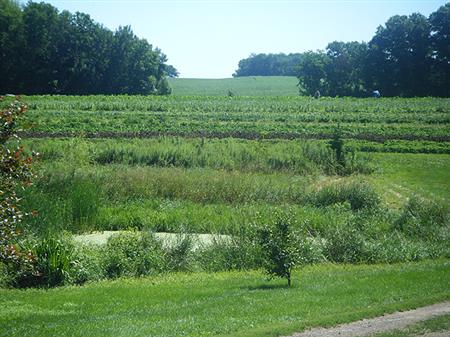
EcoEducation: CSA Farming Is About Eating Well and Being Connected To The Land
We heard from Dan Guenthner about just a tiny bit of what he considers for the health of the soil at Common Harvest Farm. An aerial picture of the farm belies the complexity that you see when looking at the soil map. "There is so much variety that must be understood," says Dan.
We've got a major gift of soil here in Minnesota. There was organic matter left by the glaciers and then in came the tall grass prairies which fixed the organic matter in place. The root systems of ten feet or more added to the organic matter over time. Contrast that with the short grass prairie on lusk soils in states to our southwest. Once these soils were disturbed by farming they were very hard to reconstitute and susceptible to terrible effects of drought and wind. Think of the Dust Bowl.
You get the same kind of Dust Bowl results in yield centric approaches featuring domesticated cultivars with poor shallow root systems. Genetic engineering has made it so not as much water is needed for corn plants encouraging even shallower roots.
Years ago we took soil out of production - creating soil banks. With the ethanol boom that land went into production again and 1 year of tillage destroyed the organic matter that was gained by 30 years of setting it aside. The key to building soil health is keeping it covered as much as possible, keeping roots in the soil. This reduces compaction, creates avenues for water, and adds organic matter as the roots eventually decompose. And side benefit -- it keeps carbon sequestered and unavailable to combine with oxygen. As we learned in our Prairie Story presentation, native plants with substantial root systems may sequester even more carbon that woody species.
